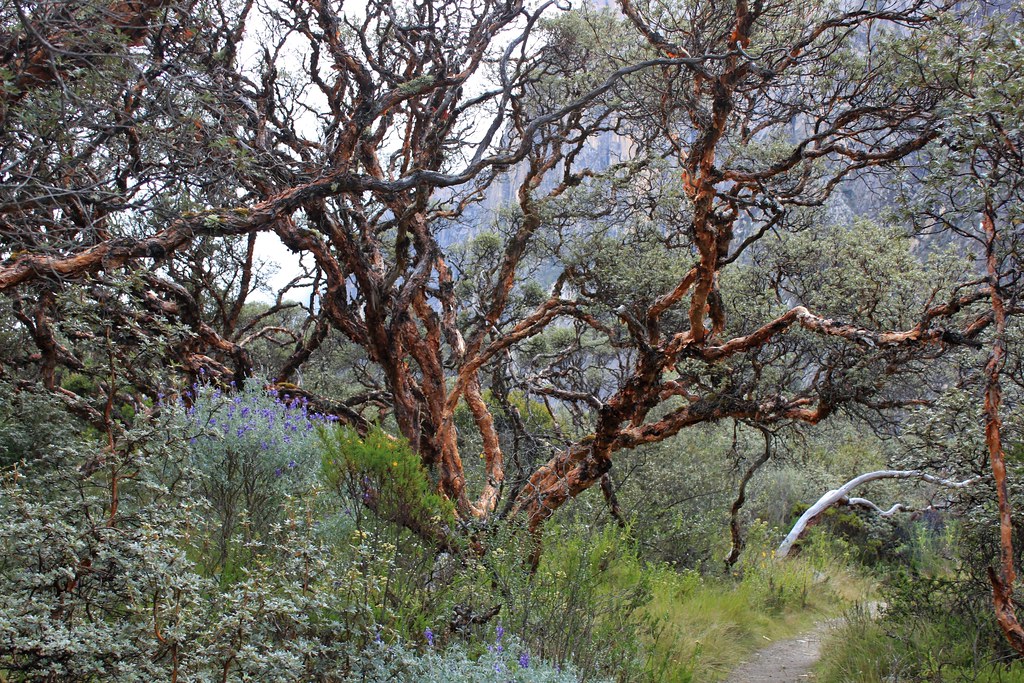Por: MARCO ARIZAPANA ALMONACID (UNAH)
Using dendrochronology to trace the impact of the hemiparasite Tristerix chodatianus on Andean Polylepis trees
The high Andean forests of the genus Polylepis (Rosaceae) are threatened by extinction due to anthropogenic effects such as timber extraction, burning, and overgrazing. Some species are also affected by Tristerix chodatianus (Loranthaceae), a hemiparasitic plant which induces progressive host damage. To understand this hemiparasitic process, we evaluated the impact of T. chodatianus on growth and the wood anatomy of Polylepis flavipila using growth rings and digital image processing. We found that P. flavipila has a xeromorphic wood anatomy and that the ecological indices of mesomorphism and vulnerability decrease at higher elevations to avoid embolisms and vessel cavitation. Tristerix chodatianus causes anatomical changes in the host wood, mainly in the last 13 years measured.
Alterations include a reduction in the vessel density, and an increase in the vessel diameter and Vulnerability Index, all of which are more evident in downstream sections of parasitized branches. These changes in the xylem tissues increase the vulnerability of the parasitized branches to embolisms and cavitation, thus leading to progressive death of the tree crown. Our study confirms that the analysis of the wood anatomy of parasitized branches can be used to determine the years of colonization of a tree branch by a hemiparasite and that it can be a useful tool to monitor the phytosanitary state of parasitized Polylepis trees.
Para acceder al artículo ingrese al siguiente link: http://repositorio.unah.edu.pe/handle/UNAH/46

